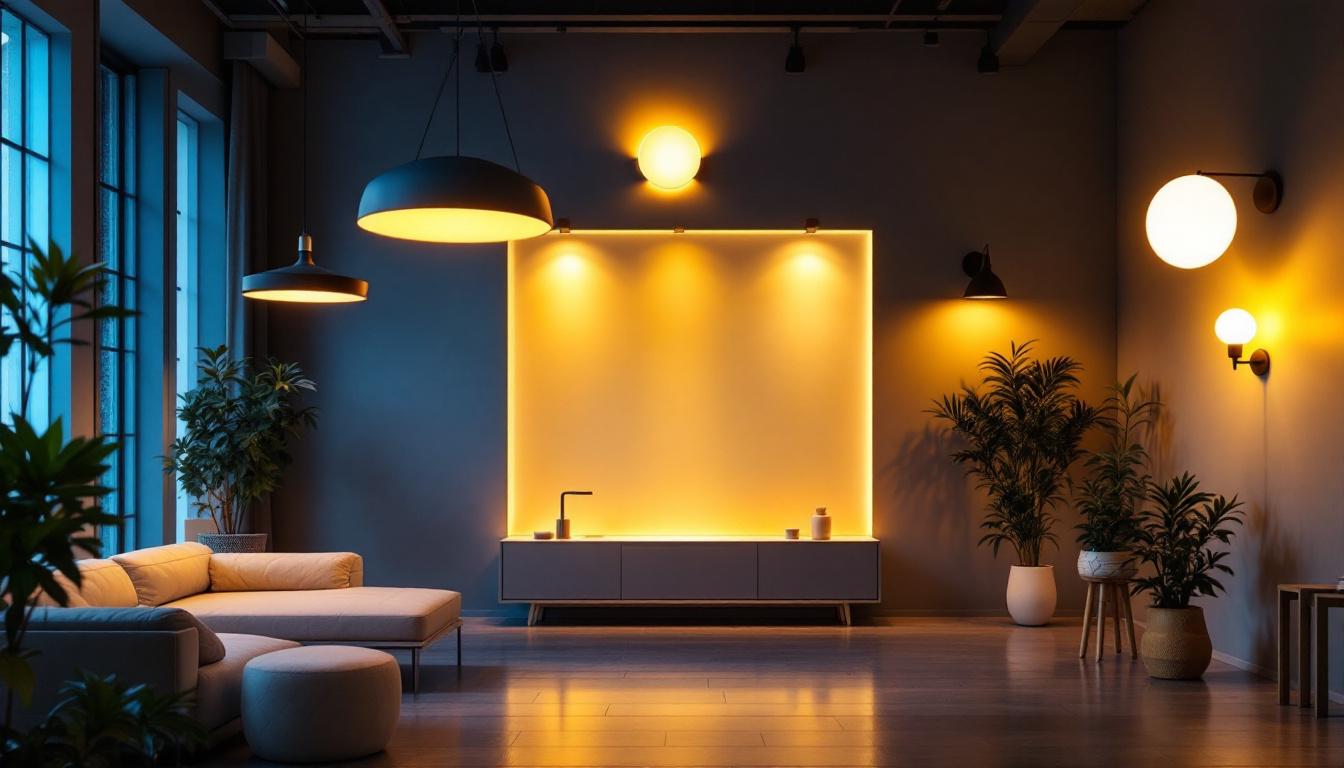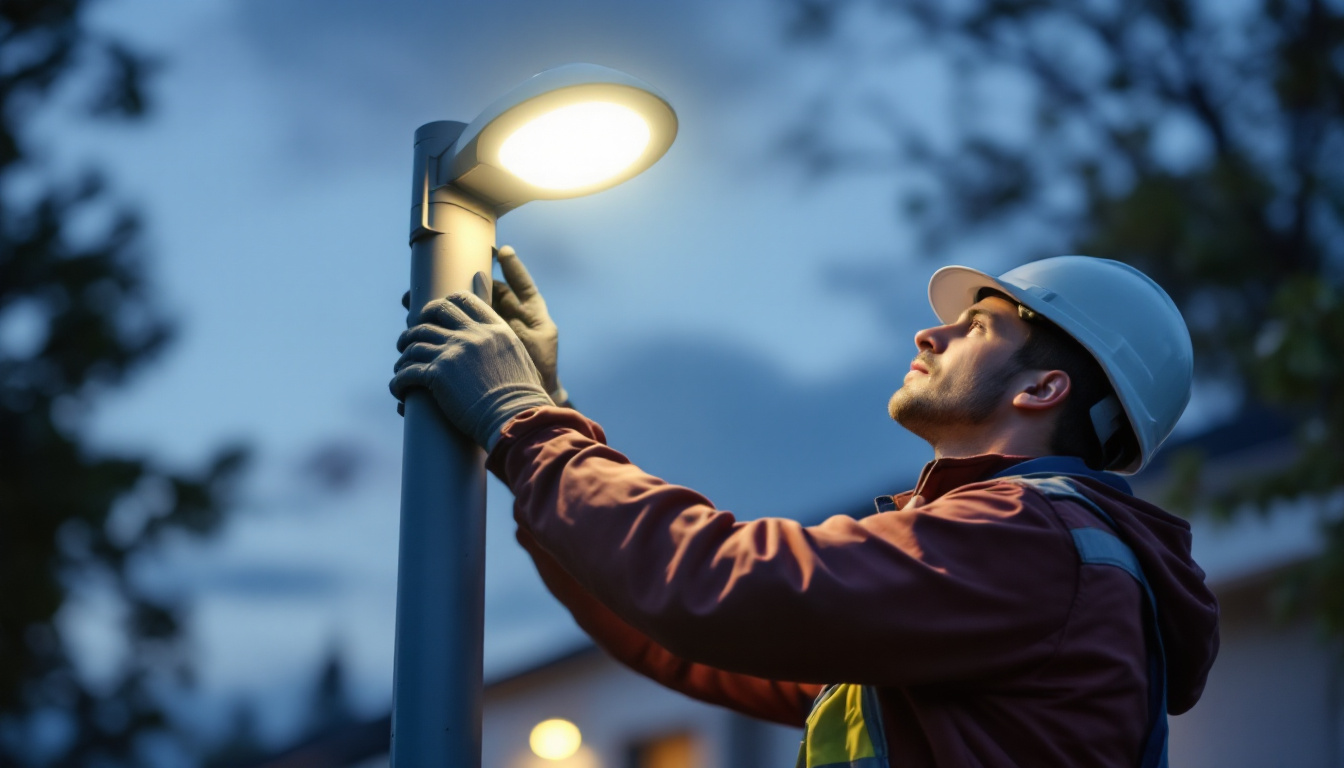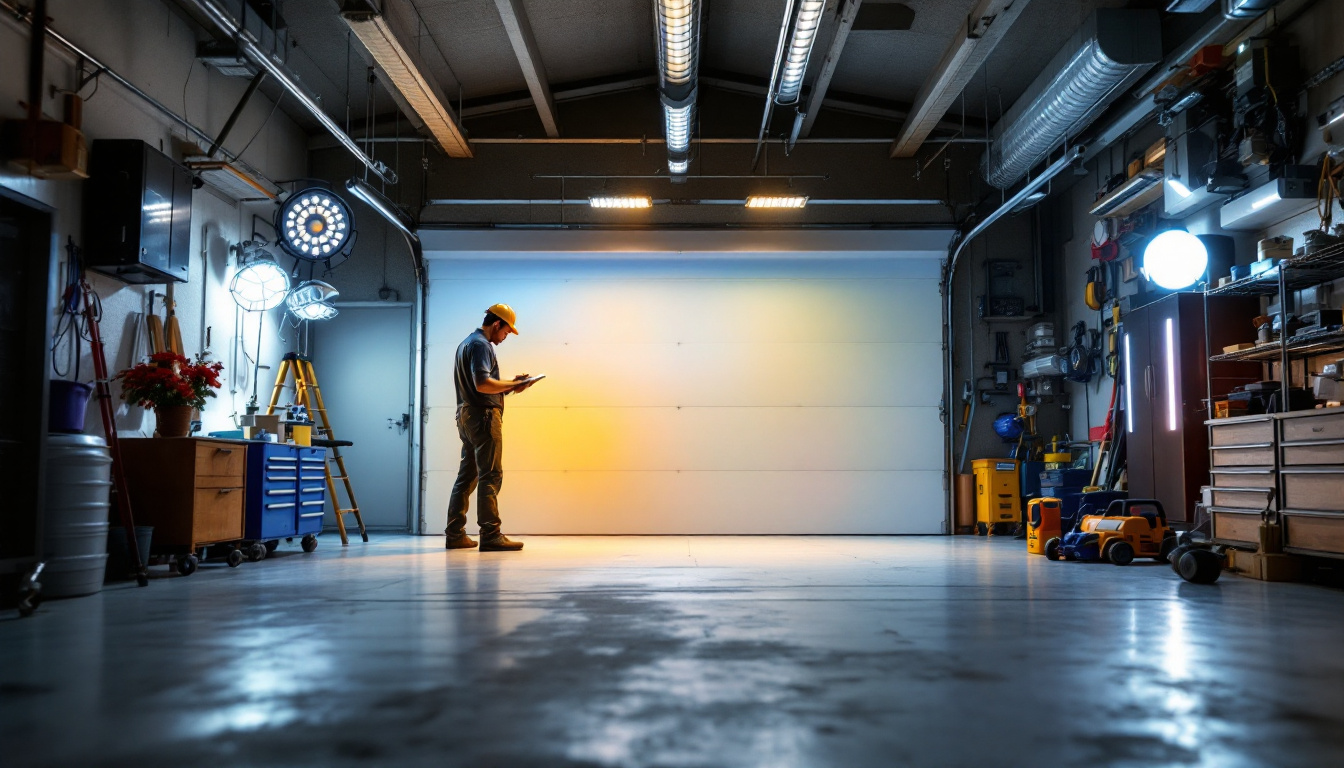
In an era where technology is evolving at an unprecedented pace, the field of lighting design and installation is experiencing a significant transformation. The advent of smart technologies and energy-efficient solutions has revolutionized how lighting systems are conceptualized, designed, and implemented. As lighting contractors, understanding these advancements is crucial for staying competitive and meeting the demands of modern clients.
This article explores the future of lighting design and installation, focusing on innovative solutions that are reshaping the industry. From smart lighting systems to sustainable practices, the future is bright for those willing to adapt to new technologies and methodologies.
One of the most exciting developments in modern lighting is the integration of smart technology, which allows for unprecedented control and customization of lighting environments. With the use of mobile applications and voice-activated systems, users can easily adjust brightness, color temperature, and even create lighting schedules that enhance both functionality and ambiance. This level of personalization not only improves user experience but also promotes energy conservation, as lights can be programmed to turn off automatically when not in use or to adjust based on natural light levels throughout the day.
Moreover, the shift towards sustainable lighting solutions is gaining momentum, with an increasing emphasis on LED technology and renewable energy sources. LED lights consume significantly less energy compared to traditional incandescent bulbs, resulting in lower utility bills and a reduced carbon footprint. Additionally, many manufacturers are now focusing on creating products that utilize solar energy, further minimizing environmental impact. As clients become more eco-conscious, lighting contractors who prioritize sustainability in their designs will not only meet client expectations but also contribute positively to the planet’s future.
One of the most significant trends in lighting design is the integration of smart technology. Smart lighting systems offer enhanced control, energy efficiency, and convenience, making them an attractive option for both residential and commercial projects.
Smart lighting systems allow users to control their lighting through mobile apps, voice commands, or automated schedules. This level of control enables homeowners and businesses to customize their lighting according to their preferences and needs. For contractors, this means offering clients a tailored experience that enhances their satisfaction and adds value to the installation.
Moreover, the ability to adjust brightness, color temperature, and even the color of the lights can create different atmospheres for various occasions, making spaces more versatile and appealing. For instance, a warm, dim light can create a cozy atmosphere for a family dinner, while bright, cool tones can invigorate a workspace or enhance focus during a meeting. The integration of smart lighting with other smart home devices, such as thermostats and security systems, further amplifies this customization, allowing for scenarios where lighting adjusts automatically based on time of day or occupancy, creating a seamless living experience.
Energy efficiency is a critical concern in today’s world, and smart lighting systems contribute significantly to reducing energy consumption. By utilizing LED technology and smart controls, these systems can lower energy bills and minimize environmental impact. For contractors, promoting energy-efficient solutions can not only attract eco-conscious clients but also help in compliance with evolving regulations regarding energy use.
Additionally, many smart lighting solutions come with features such as occupancy sensors and daylight harvesting, which further enhance energy savings. These technologies ensure that lights are only on when needed, thereby optimizing energy usage. The incorporation of smart lighting into building designs can also lead to LEED certification, a valuable asset for commercial properties. Furthermore, the data collected from smart lighting systems can provide insights into usage patterns, allowing for further optimization and energy management strategies that align with sustainability goals. As awareness of climate change grows, the demand for such innovative solutions is likely to increase, positioning smart lighting as a key player in the future of sustainable design.
The Internet of Things (IoT) is another transformative force in the lighting industry. By connecting lighting systems to the internet, contractors can offer clients a range of benefits that were previously unimaginable.
IoT-enabled lighting systems can collect data on usage patterns, allowing contractors to analyze this information for better decision-making. Understanding how and when lights are used can inform future designs and installations, ensuring that they meet the specific needs of clients.
For instance, if data shows that certain areas of a building are underutilized, contractors can recommend adjustments to the lighting layout or suggest alternative solutions that enhance functionality without unnecessary energy expenditure. Additionally, this data can help in predicting maintenance needs, as patterns of wear and tear can be identified early on, reducing downtime and repair costs. By leveraging these insights, contractors not only improve the immediate environment but also contribute to long-term sustainability goals by optimizing energy consumption.
IoT lighting systems can seamlessly integrate with other smart technologies, such as security systems, HVAC, and home automation platforms. This integration creates a cohesive smart environment that enhances user experience and convenience. For contractors, this presents an opportunity to expand their service offerings and position themselves as comprehensive solution providers.
Clients increasingly seek interconnected systems that simplify their lives, and contractors who can deliver such solutions will stand out in a competitive market. Moreover, the ability to control lighting through mobile applications or voice-activated devices adds an extra layer of convenience and personalization. Imagine a scenario where the lighting adjusts automatically based on the time of day or occupancy, creating an ambiance that suits the moment while also conserving energy. This level of customization not only enhances comfort but also appeals to the growing demand for smart home features, making it a valuable selling point for contractors in their proposals and marketing strategies.
As technology evolves, so do design trends in lighting. Contractors must stay abreast of these trends to provide clients with contemporary and aesthetically pleasing solutions.
Biophilic design, which emphasizes the connection between people and nature, is gaining traction in lighting design. Incorporating natural elements into lighting solutions can enhance well-being and productivity in both residential and commercial spaces.
Contractors can achieve this by using fixtures that mimic natural light or by designing systems that incorporate natural materials. Additionally, integrating plants and greenery with lighting can create inviting environments that promote relaxation and creativity.
Minimalism remains a dominant trend in interior design, and lighting is no exception. Sleek, unobtrusive fixtures that blend seamlessly with the environment are increasingly favored. Contractors should consider offering a range of minimalist lighting options that prioritize functionality without compromising on style.
Moreover, the use of innovative materials and finishes can elevate the aesthetic appeal of lighting installations. From matte black to brushed brass, the right choice of materials can make a significant impact on the overall design.
While the future of lighting design is promising, it is not without its challenges. Contractors must navigate various obstacles to successfully implement modern lighting solutions.
Integrating new technologies into existing systems can pose challenges for contractors. Compatibility issues may arise, and ensuring that all components work together seamlessly requires careful planning and execution. Contractors must stay informed about the latest technologies and their compatibility with traditional systems to avoid potential pitfalls.
Additionally, ongoing training and education are essential for contractors to keep pace with the rapid advancements in lighting technology. Investing in professional development can enhance skills and ensure that contractors are equipped to handle complex installations.
As smart lighting and IoT solutions become more prevalent, clients may have heightened expectations regarding their capabilities. Contractors must take the time to educate clients about the benefits and limitations of modern lighting systems. Clear communication can help manage expectations and foster a positive working relationship.
Furthermore, providing demonstrations of how smart lighting works can enhance client understanding and appreciation for the technology. By showcasing the practical applications of these systems, contractors can instill confidence in their clients.
Collaboration among various stakeholders is vital for successful lighting design and installation. Architects, interior designers, and contractors must work together to create cohesive lighting solutions that align with the overall vision of a project.
Taking an interdisciplinary approach allows for a more holistic understanding of lighting needs. By collaborating with architects and designers early in the process, contractors can ensure that lighting is integrated seamlessly into the overall design. This collaboration can lead to innovative solutions that enhance both functionality and aesthetics.
Moreover, involving all parties in the decision-making process can lead to more informed choices regarding materials, fixtures, and technologies, ultimately resulting in a more successful project outcome.
Establishing feedback loops among stakeholders can facilitate continuous improvement in lighting design and installation. Regular check-ins and discussions about what works and what doesn’t can lead to valuable insights that inform future projects.
Contractors should encourage open communication with clients and other stakeholders to gather feedback on their experiences. This information can be instrumental in refining processes and enhancing service delivery.
The future of lighting design and installation is filled with opportunities for contractors who are willing to embrace change. By leveraging smart technologies, understanding design trends, and fostering collaboration, lighting contractors can position themselves as leaders in the industry.
As the demand for innovative and sustainable lighting solutions continues to grow, contractors must remain adaptable and proactive. By staying informed about emerging technologies and trends, they can meet the evolving needs of their clients and create spaces that are not only functional but also inspiring.
In conclusion, the future of lighting design is bright, and those who are prepared to switch for electricity will undoubtedly illuminate the path forward.
Ready to lead the charge in the future of lighting design and installation? At LumenWholesale, we provide you with the cutting-edge, spec-grade lighting products you need to stay ahead of the curve. Our commitment to quality, affordability, and convenience ensures that you can access the best lighting solutions at wholesale prices, without the burden of inflated markups. With free shipping on bulk orders, we make it easy for you to get the premium lighting your projects deserve. Don’t compromise on excellence—choose LumenWholesale for Wholesale Lighting at the Best Value and brighten the way forward for your clients today.

Explore how outdoor pole lights are transforming the landscape for lighting contractors, impacting their profitability and project efficiency.

Discover how mastering the intricacies of wires and connectors can elevate your lighting projects and secure more contracts.

Discover essential tips and creative solutions for optimizing classroom lighting in “Classroom Lighting Ideas: Avoiding Pitfalls, A Lighting Contractor’s Guide.” Learn how to enhance learning environments while sidestepping common mistakes with expert advice tailored for educational spaces..

Discover the essential insights on garage LED lighting that every contractor should know.